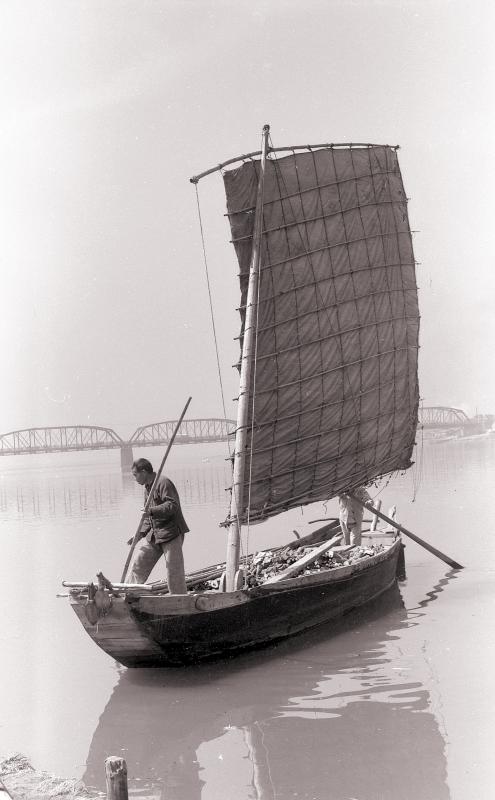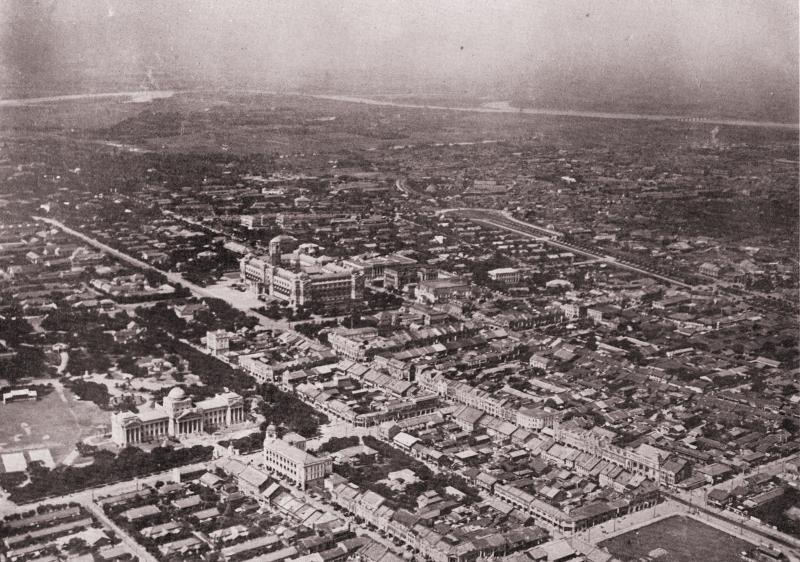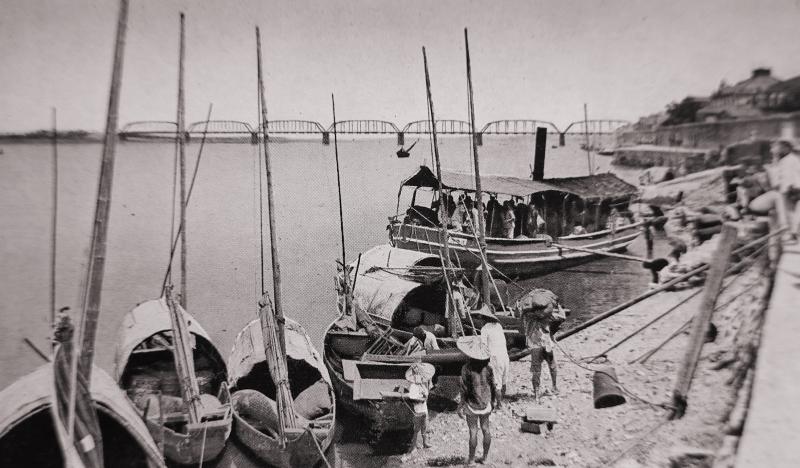March 21 to March 27
“I’d rather jump into the Tamsui River!” was once a common saying for Taipei residents. By 1987, however, nothing was worth plunging into its putrid, garbage-strewn waters.
Although large-scale human activity and settlement had been taking a toll on the river for over a century, Taiwan’s rapid industrialization in the 1960s and 1970s hastened its decline. And it wasn’t just factories. The river essentially became a public garbage dump as the Taipei area’s population exploded, and only in 1974 did the government introduce a limited and questionably enforced Water Pollution Control Act (水污染防治法).

Photo courtesy of Wikimedia Commons
A Taiwan Today article from July 1987 described how just 15 years earlier, hundreds of fishermen along the river regularly hauled in enough to support their families, and tourists flocked to its banks to sample local delicacies.
“No one comes here for boating now, and very few fish can survive in it, not even crabs,” a ship captain said.
Local restaurants only dared to serve seafood caught in the ocean.

Photo courtesy of Academia Sinica
“Yes, I am still fond of this river, but I will never taste anything from it,” a resident told Taiwan Today.
A Chinese Television Service clip from March 27, 1987 shows National Taiwan University students launching a “Save the Tamsui River” petition drive to push the government to do something about the deteriorating river. More than 1 million people signed it in less than a month, and the government launched that year the first of many Tamsui River cleaning projects.
It worked — to a certain degree. An Environmental Information Center article from 2007 states, “at least the number of severely polluted sections have decreased.”

Photo courtesy of Wikimedia Commons
The problem hasn’t been entirely fixed. A CommonWealth Magazine (天下) investigation showed that 127 factories were fined in 2020 for illegally dumping industrial sewage into the Tamsui river system. Last March, the New Taipei City government pledged to completely eliminate the river’s water pollution by 2030 — adding to the list of many clean up targets the authorities are supposed to achieve that year.
POLLUTION FRENZY
The government responded to public pressure by finally implementing its long-delayed Tamsui River cleaning plan in April 1987. The first goal, set for 1991, was to eliminate the river’s foul odors during the hot summer months.
“Everyone was fixated on fixing the Tamsui river,” a Taiwan Panorama (台灣光華) article said. The resuscitation of South Korea’s Han River and Kaohsiung’s Love River led people to ask: “Why can’t Taipei do it too?”
A Taiwan Today article noted that the pollution was 65 percent domestic wastewater and sewage, 18 percent industrial runoff, 14 percent animal farm waste and 3 percent leakage from nearby landfills or garbage facilities.
Pigs, geese, ducks and chickens were housed directly on the riverside, their carcasses and feces directly washing into the waterbody. Trucks dumped construction waste and city trash into it. Rampant pesticide use, reckless logging and habitat destruction, coal washing, illegal sand and rock harvesting and irresponsible tourists were just a few among the long list of culprits.
Taipei had the Neihu Landfill, nicknamed “garbage hill,” and moved to further prevent leakage, but in New Taipei, most waste was still dumped into the river. Nobody wanted a landfill near them, while the area’s incinerators were still under construction.
The government’s ability to fight the pollution was limited as most of the area’s households weren’t connected to the sewage system; it was a cumbersome procedure that wasn’t high on people’s list of priorities.
ONGOING EFFORT
Stricter laws were needed too. Before 1984, the water pollution law only applied to mines and industrial factories, and the rows of small, family-run operations along the shore could discharge with abandon. Hospitals and laboratories even dumped their waste into the river.
There needed to be a shift in perception that “the river is not a ditch,” Taiwan Panorama wrote. If cleaned up, the riverside could become a charming recreational area.
Then-Department of Health (today’s Ministry of Health and Welfare) head Shih Chun-jen (施純仁) told Taiwan Panorama, “For a chronically ill patient to get better, in addition to medical help, care from relatives is also very important.”
“If your family has a factory, will you invest in reducing pollution? Or will you ignore the law and set money aside for fines? If you are fined, will you go to your local councilman and convince him to get you out of it?” Taiwan Panorama quoted him as asking. “If we want a clean river, then we have to increase our standard of living first.”
A 1991 Taiwan Today article blamed both the people and the government on the slow progress. The problems were myriad: property owners by the riverside were unwilling to give up or sell their land, and at first the Environmental Protection Agency only had one person assigned to the entire project. That number was later increased to five.
A 1997 report showed that most Taipei households were connected to the sewage system, but not New Taipei City or Keelung. This is an ongoing effort, and in 2020, but according to a CommonWealth Magazine report, there were still 2.9 million unconnected households in the region. This wastewater — and illegal industrial activity — continues to be the main polluter of the river today.
Taiwan in Time, a column about Taiwan’s history that is published every Sunday, spotlights important or interesting events around the nation that either have anniversaries this week or are tied to current events.

Exceptions to the rule are sometimes revealing. For a brief few years, there was an emerging ideological split between the Democratic Progressive Party (DPP) and Chinese Nationalist Party (KMT) that appeared to be pushing the DPP in a direction that would be considered more liberal, and the KMT more conservative. In the previous column, “The KMT-DPP’s bureaucrat-led developmental state” (Dec. 11, page 12), we examined how Taiwan’s democratic system developed, and how both the two main parties largely accepted a similar consensus on how Taiwan should be run domestically and did not split along the left-right lines more familiar in

As I finally slid into the warm embrace of the hot, clifftop pool, it was a serene moment of reflection. The sound of the river reflected off the cave walls, the white of our camping lights reflected off the dark, shimmering surface of the water, and I reflected on how fortunate I was to be here. After all, the beautiful walk through narrow canyons that had brought us here had been inaccessible for five years — and will be again soon. The day had started at the Huisun Forest Area (惠蓀林場), at the end of Nantou County Route 80, north and east

Specialty sandwiches loaded with the contents of an entire charcuterie board, overflowing with sauces, creams and all manner of creative add-ons, is perhaps one of the biggest global food trends of this year. From London to New York, lines form down the block for mortadella, burrata, pistachio and more stuffed between slices of fresh sourdough, rye or focaccia. To try the trend in Taipei, Munchies Mafia is for sure the spot — could this be the best sandwich in town? Carlos from Spain and Sergio from Mexico opened this spot just seven months ago. The two met working in the

This month the government ordered a one-year block of Xiaohongshu (小紅書) or Rednote, a Chinese social media platform with more than 3 million users in Taiwan. The government pointed to widespread fraud activity on the platform, along with cybersecurity failures. Officials said that they had reached out to the company and asked it to change. However, they received no response. The pro-China parties, the Chinese Nationalist Party (KMT) and Taiwan People’s Party (TPP), immediately swung into action, denouncing the ban as an attack on free speech. This “free speech” claim was then echoed by the People’s Republic of China (PRC),